#Honors Spanish III
Text

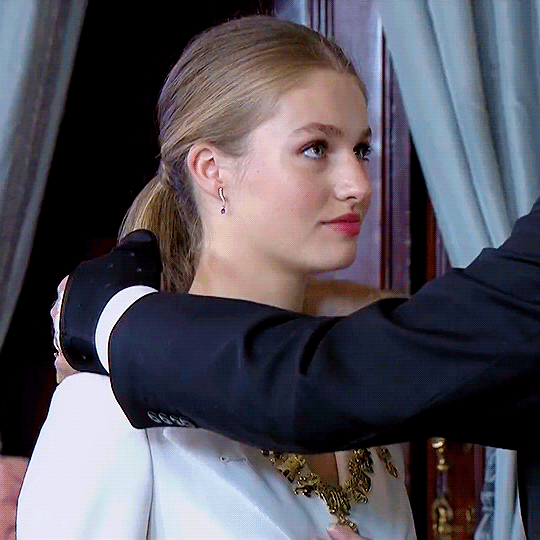
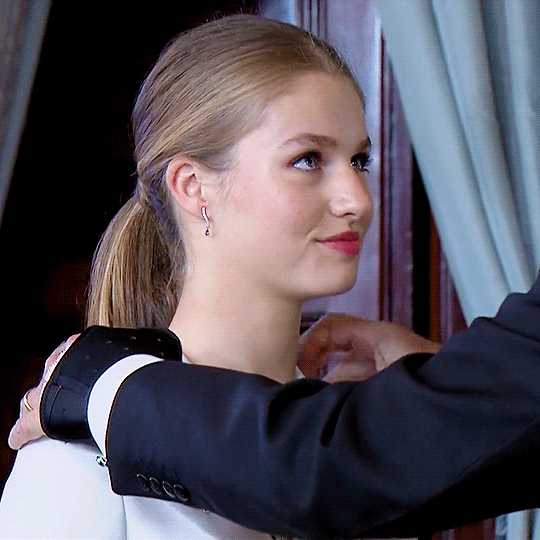
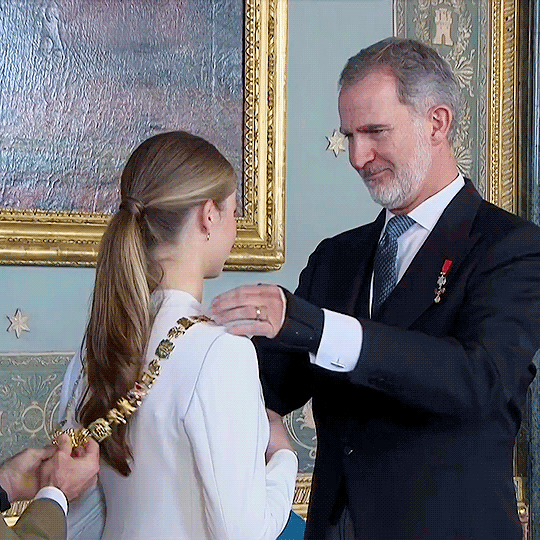
Spanish Royal Family - King Felipe Vi imposes on the Princess of Asturias the necklace of the Order of Charles III, Spain’s highest civil honor. | October 31, 2023
#royaltyedit#theroyalsandi#felipe vi#king felipe vi#princess of asturias#princess leonor#felipe x leo gif#felipe x leo gif 2023#felipe x leo oct 2023#felipe x leo 2023#spanish 2023#spanish gif#spanish gif 2023#spanish oct 2023#spanish royal family#my gif
263 notes
·
View notes
Text




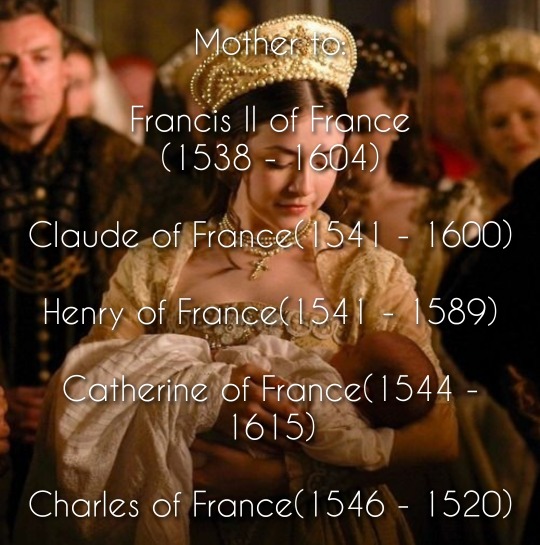

A happier life for Henry VIII's children. Part: 1.
Mary was the first surviving child of King Henry VIII of England from his first marriage to the Spanish princess Catherine of Aragon. The princess knew that she was not her parents' only child - all of her siblings died shortly after birth. The birth of a living and healthy child was a great happiness for King Henry and Queen Catherine, even though the child was a girl. That is why she became the king's favorite daughter. When she was 12 years old, her father decided to divorce her mother. Catherine did not resist the king's decision for a long time, but accepted the inevitable and agreed to the divorce with favorable terms. For this, the king, as promised, retained for Mary the status of princess and allowed the former spouse to communicate with his daughter. After the divorce for Mary little changed, she continued to grow up in the love of her father and mother, often visited both parents. The princess did not like her father's second wife, but did not show it. Anne Boleyn did not meet Henry's expectations, so he sent her to a convent under strict supervision. The king also wanted to declare Princess Elizabeth illegitimate, but Mary stood up for her sister and convinced her father not to do so. Soon the king married Jane Seymour, and a year after the wedding she gave him a long-awaited son, whom the happy father named Edward. In honor of this joyous event, Henry organized a grand feast that lasted for a whole week. In the same year, Princess Mary married Prince Henry, heir to the French throne. Before meeting his future wife, the dauphin had a love affair with Diana de Poitiers, but when he first saw his betrothed, he fell madly in love with her. Henry immediately severed all ties with Diana and was faithful to his wife until his death. The marriage of Mary and Henry turned out to be very happy. They had five children:
Francis II of France(1538 - 1604). Nicknamed "The Peacemaker" for the foreign policy calm during his reign. During his reign, France did not wage a single war. Husband of Helena of Austria, they had a good relationship. In marriage 7 children were born: Mary, Louis XIII, Anne, Henry, Christina, Philip, Gaston.
Claude of France(1541 - 1600). Queen of Spain. In 1556 she became the wife of Philip II. The spouses loved each other despite the big difference in age. They had 5 children: Philip III, Isabella, Joanna, Ferdinand, Diego.
Henry of France(1541 - 1589). Duke of Orleans. Was a favorite son for his mother, as from a young age showed a keen interest in religion. And when he became older he decided to devote his life to the service of God. He was not married and had no children.
Catherine of France(1544 - 1615). Archduchess of Austria. Favorite sister of Francis II. Was the second wife of Ferdinand II of Austria. The spouses did not love each other, but respected each other. In marriage 3 daughters were born: Anne, Mary, Eleanor. After the death of her husband returned to her homeland.
Charles of France(1546 - 1620). Duke of Angoulême. Because of his dissolute lifestyle he had conflicts with his mother. He married his cousin Jane, daughter of King Edward VI of England. The married life of Charles and Jane was not happy, because of his constant cheating. The marriage produced 4 children: Gedeon, Charlotte, Michelle and Cesar.
While in France, she did not forget about her family and maintained a close correspondence not only with her parents, but also with her second stepmother, because of the warm and close relationship between them. Before leaving, Mary and Jane had great difficulty convincing the king to bring Elizabeth to the palace so that she would not feel lonely. Henry initially had no paternal feelings for his second daughter, but was later able to develop a warmth for the girl. In 1540, Dauphine learned that her mother had died. She could not come to her funeral, as she was pregnant with her second child, but due to severe stress she had a miscarriage. Because of these events, the princess fell into depression, she did not leave her chambers and hardly ate anything. Her husband was with her all this time and provided as much support as possible, but when he realized that he could not cope, he invited Jane to help. She couldn't stay away and convinced Henry to let her go to Mary. After a few months, Mary recovered and all three returned to England. The king greeted his wife, daughter and son-in-law warmly. And the princess was finally able to honor her mother. She also spent time with her brother and sister because she missed them during the 6 years of absence. When Mary returned to France, she was already pregnant with her third child, and nine months later she gave birth to twins. Five years passed.During this time, Mary and Henry became king and queen of France and had two more children. They successfully ruled the kingdom. Shortly before his death, Henry 8 appointed his eldest daughter as regent under his young son. The queen excelled in her duties as regent and pursued a mild policy toward her subjects. When she realized that Edward was already capable of ruling on his own, she placed the power in his hands and returned to France. In 1559, King Henry of France fell from his horse while hunting and died. Mary mourned the death of her beloved husband for a long time and wore mourning for him for the rest of her life. She warmly remembered the 22 happy years they gave to each other and loved to tell her grandchildren about it. Mary often came to visit her brother, and the two developed a warm relationship. The dowager queen of France died in 1580. She was buried next to her husband Henry II in the Abbey of Saint-Denis.
Source:
Pinterest: Dinastia Tudor & Reyes Católicos, Bit_na
Tumblr: the borgias ITALIA
#history#royal family#royalty#history au#au#royal#henryviii#the tudors#british royal family#16th century#catherine of aragon#anne boleyn#jane seymour#marytudor#house of tudor#tudor dynasty#tudor england
10 notes
·
View notes
Note
Like Bjorn Ironside pretending to be dead and getting his coffin only to suppress attack, what’s the coolest battle/fight tactics in history?
I'm going to preface this with the fact that 1) There are too many to list here (or anywhere really) and 2) I'm limited to what I personally know.
That said, here are a few that spring to mind:
Richard III's last charge at the Battle of Bosworth Field. Not only did he get within a sword's length of killing Henry Tudor himself but Richard also killed Henry's standard-bearer, Sir William Brandon, AND unhorsed burly John Cheyne, his older brother's former standard-bearer. Not bad for a guy who would today qualify for the Special Olympics. (The Japanese equivalent would be Sanada Yukimura.)
Harold Godwinson marching his army 185 miles (or 298 km) in just four days to take the Norwegians by surprise at the Battle of Stamford Bridge. (Honorable mention goes to the soldier who got in a barrel and floated under the bridge to spear the Viking holding off the entire English army. Chevalier de Bayard, a real life knight in shining armor, later replicated this feat by holding off 200 Spanish knights single-handedly at the Battle of Garigliano.)
When the rebels started chanting "Henry Percy King" at the Battle of Shrewsbury, Henry IV shouted back "Henry Percy is dead." Needless to say, Henry Percy did not respond. (His eldest son, the future Henry V (or as Shakespeare names him in his youth, Prince Hal), took an arrow to the face in this same battle, which is why Henry V's portraits always depict him from his uninjured side.)
Hannibal crossing the Alps and whooping Rome's ass multiple times on its own turf. (There's a reason "Hannibal ad portas" became a saying. Also, Napoleon I later replicated this feat.)
At the Battle of Bremule, a Norman knight seized the reins of Louis the Fat's horse, shouting "the king is taken!" Louis' response? Hitting the guy with his mace and shouting "the king is not taken, neither at war, nor at chess!"
Alexander the Great turning the island city of Tyre into a peninsula.
Alexander Buchanan killing Thomas, Duke of Clarence at the Battle of Bauge and holding the dead duke's coronet aloft on his lance.
Thanks for the question, anon
#history#military history#english history#french history#scottish history#ancient history#medieval history#renaissance history#japanese history#sengoku jidai#warring states period#hundred years war#wars of the roses#the italian wars#punic wars#napoleon bonaparte#hannibal barca#alexander the great#chevalier de bayard#william shakespeare
22 notes
·
View notes
Text
SAINT OF THE DAY (April 14)
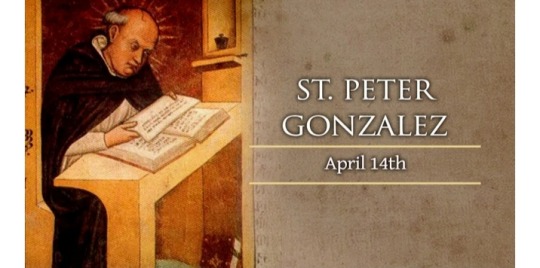
Public humiliation led Peter Gonzalez to a true conversion experience and set him on the road to sainthood.
Peter was born on 14 October 1190 into a noble family in Castile, Spain. He became a priest as a step to high office.
One Christmas Day, during a grand entrance into the city before all the townspeople, the young priest was thrown off of his horse and onto a dung-heap.
Embarrassed and knowing that his parishioners thought he was a fake, Peter withdrew from the world for a period of prayer and meditation.
During this time, he had a conversion and spent the rest of his life making up for his lost youth.
He joined the Dominicans and shunned those who tried to convince him to return to his old ways, saying: "If you love me, follow me! If you cannot follow me, forget me!"
He also became a renowned preacher. Crowds gathered to hear him and numberless conversions were the result of his efforts.
He served as the confessor and court chaplain to King Saint Ferdinand III of Castile and reformed court life.
He worked for the crusade against the Moors, went into the battlefields, and worked for humane treatment of Moorish prisoners.
Fearing that the honors and easy life offered by the king’s court would lead him to return to his previous ways, he left the court and evangelized to shepherds and sailors.
He died on 15 April 1246.
Peter was beatified by Pope Innocent IV in 1254. Although he was never formally canonized, his cultus was confirmed on 13 December 1741 by Pope Benedict XIV.
He is considered the patron saint of Spanish and Portuguese sailors.
3 notes
·
View notes
Note
Not the same person who asked you that question but I understand what they’re saying. We got gorgeous portraits in gowns for Ingrid and Amalia and even Alexia this year for their 18th birthdays. I understand the Spanish monarchy will never have a state dinner for Leonor like we saw this year for Ingrid and Christian but I agree I’d like to see more formal portraits than the one of her in that blue t-shirt. I do believe we will get them come tomorrow.
There were not portraits in gowns for the 18th birthdays of Amalia or Alexia (nor for Elisabeth's) nor were their portraits particularly formal. White tie 18th birthday parties seem to be an exclusively Scandinavian monarchy thing nowadays (Scandinavian monarchies tend to use white tie much more than the other Europea monarchies) and haven't been replicated in the Benelux or in Spain.
Leonor's photo that's being used in the Madrid streets has not been released by Casa Real and is not an official portrait, It was taken by the Royal Mint for the likeness for a conmemorative 40 euro coin for her 18th birthday. I do think they will release new official photos for her birthday but Leonor has been everywhere this month and we have seen her in a variety of situations (Military events, National Day, evening ceremony and concert at the Princess of Asturias awards, morning audiences and informal Asturian village award) and the press and the public has a real and recent idea and lots of media (photos, videos etc). There's no real need to see new pictures if she's seen in public a lot and on her birthday there will be live broadcast of Leonor swearing an Oath to the Constitution and to the King, greeting the powers of the State, attending a military parade in her honor, going from Parliament to the Royal Palace, receiving the Collar of the Order of Carlos III, making a speech at the Royal Palace, greeting the lucheon guests... It's going to be much more powerful than any official photo could ever be.
It's very likely that the first time Leonor wears a tiara Will be for a very important State Visit to Spain.
10 notes
·
View notes
Text
answer with 3 random facts about yourself and send it to the last 7 blogs in your notifications.
i. i have been a languages & literature major for few years ( & have studied french & spanish for five years as well in highschool ) before recently switching to computer science. what a concept whew.
ii. i have a tendency to mostly write male muses, although yuna has been the muse that stuck with me the longest. ( 10+ years. ) also planning to get a tattoo in her honor soon.
iii. tiny waist men. i love them
[ @inmydrcams ; @fateblooms ; @violetarcs ; @blackmage-lulu ; @starvingtongue ; @liightbringr ; @asteritm — feel free to ignore if already tagged, mwah. ♥ ]
#outofcharacter.#thank you steph for tagging me mwah 💞 ;#took me three hours to think about the last fact and then.#i saw fanart of clive and dion—#squeezes them in my hand like they're grapes.#& also i tagged some peeps rather than all of my latest notifs! ♥
8 notes
·
View notes
Text
SP Kids’ High School Schedules
Stan
- 1st: Biology II
- 2nd: Strength & Conditioning
- 3rd: AP US Gov & Politics 12
- 4th: Healthcare
- 5th: AP Literature 12
- 6th: Library Exploratory Services
- 7th: Precalculus
Kyle
- 1st: Dual Enrollment Literature 12
- 2nd: AP Computer Science
- 3rd: AP US Gov & Politics
- 4th: Sales and Promotion Planning
- 5th: Dual Enrollment Biology II
- 6th: Library Exploratoty Services
- 7th: Dual Enrollment Precalculus
Kenny
- 1st: Scenic Design and Construction III
- 2nd: AP Computer Science
- 3rd: AP US Gov & Politics
- 4th: Automotive Service Tech B
- 5th: AP Literature 12
- 6th: AP Precalculus
- 7th: AP Psychology II
Wendy
- 1st: Scenic Design and Construction II
- 2nd: AP Computer Science
- 3rd: Dual Enrollment Precalculus
- 4th: Healthcare
- 5th: Dual Enrollment Biology
- 6th: Strength & Conditioning
- 7th: Dual Enrollment Literature 12
Craig
- 1st: Dual Enrollment Earth and Space Sciences
- 2nd: AP Computer Science
- 3rd: Precalculus
- 4th: Automotive Service Tech B
- 5th: US Gov and Politics
- 6th: AP Literature 12
- 7th: Spanish III
Tweek
- 1st: Biology II
- 2nd: AP Literature 12
- 3rd: Culinary Arts III
- 4th: Musical Theatre IV
- 5th: US Gov and Politics
- 6th: Television Production
- 7th: Mathematic Modeling
Clyde
- 1st: Honors Chemistry
- 2nd: Strength & Conditioning
- 3rd: Culinary Arts III
- 4th: English 12
- 5th: Mathematic Modeling
- 6th: Carpentry 3
- 7th: US History II
Jimmy
- 1st: US History II
- 2nd: Marketing Principles
- 3rd: Mathematic Modeling
- 4th: English 12
- 5th: Acting Technique III
- 6th: Main Office Exploratory Services
- 7th: Honors Chemistry
Tolkien
- 1st: Dual Enrollment Literature 12
- 2nd: AP Computer Science
- 3rd: Precalculus
- 4th: Library Exploratory Services
- 5th: United States Gov & History
- 6th: Business Finance
- 7th: Spanish II
Bebe
- 1st: Costume Design & Construction II
- 2nd: Forensics and Criminal Investigations
- 3rd: AP US Gov & Politics
- 4th: Healthcare
- 5th: AP Literature 12
- 6th: Cosmetology
- 7th: Mathematic Modeling
Leo
- 1st: Fashion Design IV
- 2nd: AP Biology II
- 3rd: AP US Gov & Politics
- 4th: Musical Theatre IV
- 5th: AP Literature 12
- 6th: Television Production
- 7th: Mathematic Modeling
Nichole
- 1st: Costume Design & Construction II
- 2nd: AP Biology II
- 3rd: US Gov & Politics 12
- 4th: Healthcare
- 5th: AP Literature 12
- 6th: Cosmotology
- 7th: Math Modeling
21 notes
·
View notes
Text
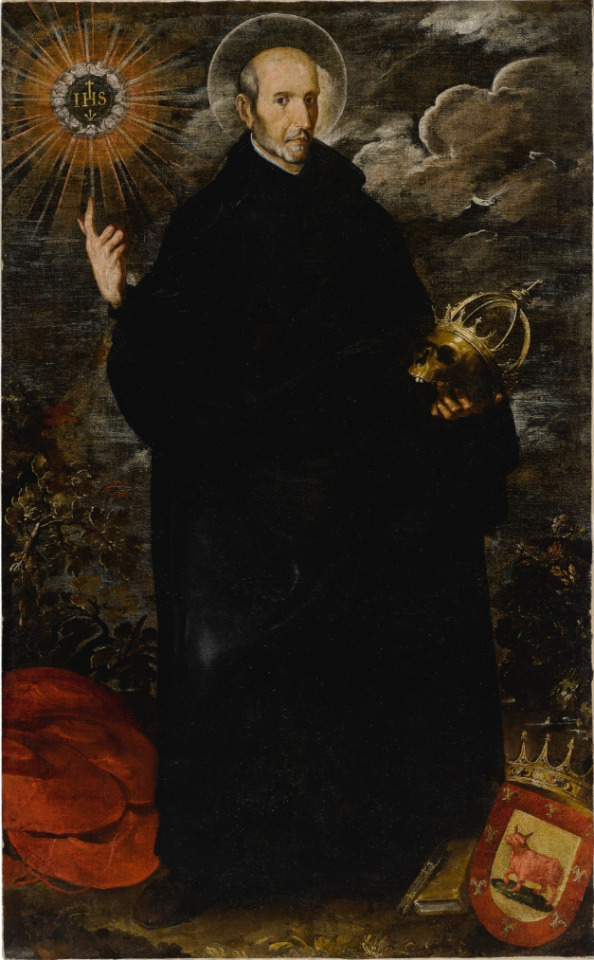
THE DESCRIPTION OF SAINT FRANCIS BORGIA
The Patron Against Earthquakes
Feast Day: September 30, October 3 (Jesuit calendar)
Francis Borgia (Francisco de Borja y Aragón) gave up incredible wealth, power and privilege as a Spanish nobleman to enter the Society of Jesus where his experience brought him to leadership as the third superior general of the young Society of Jesus. The oldest son of the third duke of Gandía, Borgia was born in the family palace in Valencia. His great grandfather on his father's side was Pope Alexander VI, and his mother's grandfather was King Ferdinand the Catholic.
Like other young nobles he was trained for life at court, and in 1522 was appointed page to his cousin Catherine, the sister of Emperor Charles V who invited him back to court after he studied philosophy for three years. In 1529, he married Leonor de Castro of Portugal, Empress Isabella's first lady-in-waiting. The 20 year-old Borgia was honored by the Emperor who named him Marquis of Llombai, and placed him in charge of the imperial household. During the next 10 years, Francis and Eleanor had eight children and lived in great familiarity with Charles and Isabella, until the Empress unexpectedly died on May 1, 1539.
Her death led directly to Borgia's conversion when Francis accompanied the funeral cortege to the burial place in the royal chapel in Granada. When the coffin was opened, he saw not the beautiful face of the 36-year-old queen, but a face beyond recognition. Not wanting to serve another master who would die, he began to devote himself to prayer and penance.
After he returned from Granada, he was appointed Viceroy of Catalonia in June 1539, and then became the fourth duke of Gandía after his father died four years later. He returned to the family palace to manage his estates, but when his wife Leonor died March 27, 1546, he resolved to dedicate the rest of his life to God's service. He was familiar with the Jesuits, having founded a Jesuit college in Gandía and being a personal friend of Father Peter Favre whom he asked to inform Ignatius of his decision. Ignatius welcomed him into the Society but recommended that he tell no one until he arranged affairs for his children and finished studying theology. Meanwhile, the founder of the Jesuits encouraged the duke to continue living as a nobleman. Francis pronounced his vows as a Jesuit on Feb. 1, 1548 and on Aug. 20, 1550 earned a doctorate in theology from the university which he himself had founded.
Since 1550 was a Holy Year, Francis took the opportunity to make a pilgrimage to Rome so he could visit Ignatius and arrange his public entrance into the Society of Jesus. He left his home in Gandía, never to see it again, and lodged in the Jesuit residence in Rome with Ignatius rather than taking Pope Julius III's offer to stay in the Borgia apartments in the Vatican. After living as a Jesuit from the end of October until early February 1551, he returned to Spain where he resigned his title in favor of his son, Carlos. As soon as he received the Emperor's letter accepting his resignation, Francis donned the Jesuit cassock. He was ordained a priest on May 23 and celebrated his first Mass in the chapel in the Loyola family home.
For a few years Borgia worked as an ordinary parish priest. In 1554 he was named Commissary General in Spain, with power over provincials in Spain and Portugal. He founded Spain's first novitiate, at Simancas, and set up over 20 schools. He did not attend the first general congregation, convened almost two years after Ignatius died, but did return to Rome in 1561 at Pope Pius IV's request. He was chosen to be vicar general when Father James Laínez, who succeeded Ignatius as superior general, attended the last session of the Council of Trent. Upon Laínez's return, Borgia became assistant for Spain and Portugal, and then was elected to succeed Laínez after his death in 1565.
Borgia served as the third superior general of the Jesuits for seven years and devoted himself to revising the Society's rules, expanding its missions in India and the Americas, and shepherding the growth of the young Society.
His final project was a mission to Spain accompanying Cardinal Michele Bonelli in an effort to secure Spain's help against the Turks. The two churchmen left Rome in June 1571, and arrived in Barcelona by the end of August. Borgia was overwhelmed by the reception he received from people who had known him as a nobleman and honored his choice of religious life. In December, Borgia left Spain for France to continue the diplomatic mission, but he fell ill from fever and pleurisy because of the unusually cold. He had to spend weeks resting in Turin on the return trip to Rome and then stayed with relatives in Ferrara during the summer.
Finally, he set out for Rome on Sept. 3, 1572, going to bed immediately upon his arrival. His final illness lasted three days before the 61-year-old general died during the night of September 30.
Source: jesuits.global
#random stuff#catholic#catholic saints#francis borgia#francisco de borja y aragó#francisco borja#jesuits#society of jesus
4 notes
·
View notes
Text
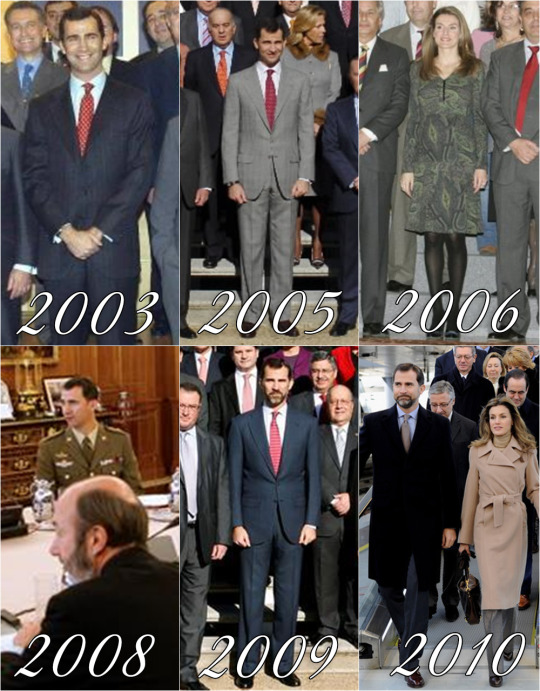
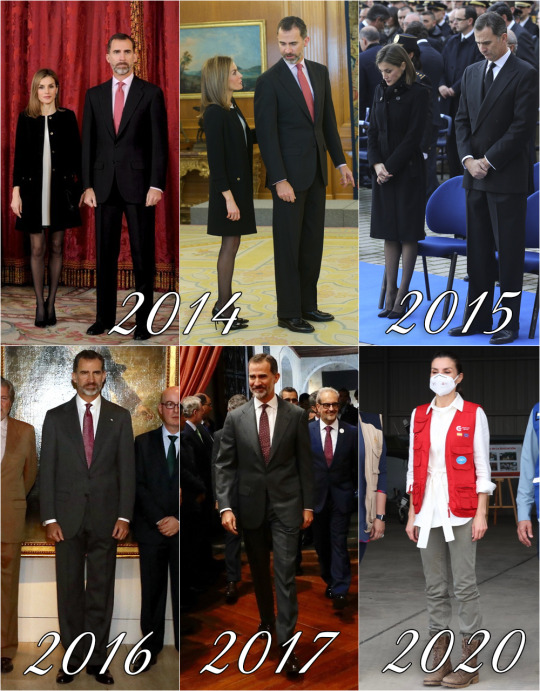

Felipe and Letizia retrospective: December 15th
2003: 8th edition of the Prince Felipe Awards to Business Excellence.
2005: Audiences at la Zarzuela
2006: Audiences at la Zarzuela
2008: Meeting of the National Defense Council
2009: Audiences at la Zarzuela
2010: Opened the new high speed train Madrid-Albacete at Atocha Railway Station.
2014: Received Senegal’s President Macky Sall at the Royal Palace in Madrid & Received Academia de las Artes y Las Ciencias Cinematograficas members at la Zarzuela.
2015: Funeral for the members of the National Police Corps killed in an attack perpetrated at the Spanish Embassy in Kabul (1, 2)
2016: Inaugurated the exhibition “Carlos III: external and scientific projection of an illustrated reign”
2017: Presented the new Spanish dictionary for legal terms in Salamanca
2020: Cooperation trip to Honduras.
2021: 18th National Young Entrepreneur Awards & 16th annual Gala of the Spanish Olympic Comittee honoring the 2020 Olympic Athletes
2022: Meeting with young volunteers and participants in Red Cross programs
F&L Through the Years: 1100/??
#King Felipe#Queen Letizia#Princess Leonor#King Felipe of Spain#Queen Letizia of Spain#Princess Leonor of Asturias#King Felipe VI#Princess of Asturias#King Felipe VI of Spain#F&L Through the Years#December15
4 notes
·
View notes
Text
NAVIGATION !

i. INTRODUCTION
hi, my name is sandie / san !
she/her, twenty_two
intj-a, libra, 5w4, true neutral
law student, aspiring prosecutor; also interested in linguistics, european law, history, neuroscience
fluent in dutch and english, learning spanish
soundtrack fanatic
top artists: seventeen, banks, dpr ian, tupac, lana del rey, megan thee stallion, tove lo, don toliver, lady gaga, the weeknd, the nbhd, john powell
lover of video games, theme parks, dance, art, fashion, music, figure skating, films, shopping, food & nature !
current obsessions: dishonored, house of the dragon, going seventeen, dance classes
gyu biased + honorable mentions jeonghan, dk, the8
other idols i like: lisa, taehyung, changkyun, wooyoung, san, seonghwa, yuna, yuqi, minnie, jackson !

ii. RULES
a few things to know !
i do not take requests, my askbox is open for other questions and stuff though :)
please always read the warnings displayed in the ‘tags’ section of my posts!
do not repost, copy, translate or plagiarize my work in any way whatsoever, regardless of platform.

iii. LINKS
you can find my works sorted per member here.
0 notes
Text
OC PROFILE #11: ORIGINAL UNIVERSE (UNTITLED VAMPIRE COMEDY)

"Sometimes, you just need a little weird science to solve your problems."
i.– basic info
☣ name: Rhiannon Cage
☣ nicknames: Riri, Mad Scientist, Da Ba Dee Da Ba Die (will elaborate)
☣ age: 26
☣ birthday: March 18, 1997
☣ star sign: Pisces
☣ birthplace: Pittsburgh, Pennsylvania
☣ hometown: Pittsburgh, Pennsylvania
☣ ethnicity: White
☣ nationality: American
☣ languages spoken: English, Spanish, German (not very well)
☣ gender: cis female (she/her)
☣ sexuality: aroace
ii.– appearance
☣ description: Rhiannon is an average-height woman with short black hair and green eyes. Her most distinguishing feature is her skin, which is a shade of blue due to her use of colloidal silver (argyria). She has numerous ear piercings, similar to Vinnie, as well as a lot of silver jewelry.
☣ height: 5'5 (175 cm)
☣ weight: unknown/irrelevant
☣ other distinguishing features: wide smile, eye bags, short fingernails
iii.– personality
☣ positive traits: determined, intelligent, motivated, trustworthy, witty
☣ neutral traits: ambitious, stubborn, enigmatic, blunt, questioning
☣ negative traits: quick-tempered, know-it-all, moody, single-minded, obsessive
☣ likes: science, rodents, routine, cheese puffs, soap operas
☣ dislikes: wet textures, vampires, loud noises, summer, spicy food
☣ fears: vampires, mutilation, needles, public speaking
☣ hobbies: watching soap operas, collecting porcelain cats, researching vampires, listening to music, taking care of her guinea pigs
☣ talents: intelligence, problem-solving, agility
iv.– abilities
☣ weapons: gun (with silver bullets), pure silver dagger
v.– relationships
☣ friends: Vinnie Wright, Jasper Pedroza Veracruz
☣ enemies: ANY AND ALL VAMPIRES.
☣ love interest: none, single
vi.– backstory
Rhiannon was born and raised in Pittsburgh. In her youth, she was known for being far ahead of her peers in all subjects. After an IQ test at the age of 8, it was discovered she had an IQ of 130, which made everyone expect great things from her. Despite all the pressure, Rhiannon took it in stride, being consistently at the top of her class and winning science fairs back-to-back.
At the age of 16, she was attacked by a vampire. The only reason why they didn't end up killing her was her jewelry, which was made of pure silver. Afterwards, Rhiannon wasn't the same. She became secluded and paranoid, causing her grades to slip in senior year. This didn't stop her from being accepted into the University of Pittsburgh's honors school, where she would study biology. It was there that she met Jasper Pedroza Veracruz, a geology major who harbored the same hatred for vampires. The two became fast friends even after they graduated.
After graduation, the two started the Vampire Hunters' Association (or VHA for short) and were shortly thereafter joined by Vinnie Wright, an aspiring cryptozoologist with a masters' in mechanical enginering from MIT.
…and then the fic starts.
viii.– other
☣ fashion styles: does "mad scientist" count as an aesthetic?
☣ voice claim: Lizzie Freeman
☣ face claim: Emily Rudd
☣ theme song: Weird Science- Oingo Boingo
☣ assorted fun facts:
She has three guinea pigs named Oppenheimer, Darwin, and Turing.
She has an IQ of 130 and brags about it constantly.
She watches Spanish-language soap operas with Jasper.
She loves movies and books about mad scientists.
She is autistic.
She takes colloidal silver supplements daily, which makes her blood practically poison to vampires.
#long post#ocs#oc#oc profile#original character#my oc#original universe#oc: rhiannon cage#yes she has blue skin what of it#and yes i know that iq means next to nothing but she's really boastful about it#and i may or may not have accidentally modeled her off of medic tf2 (except somewhat more sane)
0 notes
Text
Events 12.21 (before 1940)
AD 69 – The Roman Senate declares Vespasian emperor of Rome, the last in the Year of the Four Emperors.
1124 – Pope Honorius II is consecrated, having been elected after the controversial dethroning of Pope Celestine II.
1140 – After a siege of several weeks, the city of Weinsberg and its castle surrender to Conrad III of Germany.
1237 – The city of Ryazan is sacked by the Mongol army of Batu Khan.
1361 – The Battle of Linuesa is fought in the context of the Spanish Reconquista between the forces of the Emirate of Granada and the combined army of the Kingdom of Castile and of Jaén resulting in a Castilian victory.
1598 – Battle of Curalaba: The revolting Mapuche, led by cacique Pelentaru, inflict a major defeat on Spanish troops in southern Chile.
1620 – Plymouth Colony: William Bradford and the Mayflower Pilgrims land near what is now known as Plymouth Rock in Plymouth, Massachusetts.
1826 – American settlers in Nacogdoches, Mexican Texas, declare their independence, starting the Fredonian Rebellion.
1832 – Egyptian–Ottoman War: Egyptian forces decisively defeat Ottoman troops at the Battle of Konya.
1844 – The Rochdale Society of Equitable Pioneers commences business at its cooperative in Rochdale, England, starting the Cooperative movement.
1861 – Medal of Honor: Public Resolution 82, containing a provision for a Navy Medal of Valor, is signed into law by President Abraham Lincoln.
1872 – Challenger expedition: HMS Challenger, commanded by Captain George Nares, sails from Portsmouth, England.
1879 – World premiere of Henrik Ibsen's A Doll's House at the Royal Theatre in Copenhagen, Denmark.
1883 – The Royal Canadian Dragoons and The Royal Canadian Regiment, the first Permanent Force cavalry and infantry regiments of the Canadian Army, are formed.
1907 – The Chilean Army commits a massacre of at least 2,000 striking saltpeter miners in Iquique, Chile.
1910 – An underground explosion at the Hulton Bank Colliery No. 3 Pit in Over Hulton, Westhoughton, England, kills 344 miners.
1913 – Arthur Wynne's "word-cross", the first crossword puzzle, is published in the New York World.
1919 – American anarchist Emma Goldman is deported to Russia.
1923 – United Kingdom and Nepal formally sign an agreement of friendship, called the Nepal–Britain Treaty of 1923, which superseded the Treaty of Sugauli signed in 1816.
1934 – Lieutenant Kijé, one of Sergei Prokofiev's best-known works, premiered
1936 – First flight of the Junkers Ju 88 multi-role combat aircraft.
1937 – Snow White and the Seven Dwarfs, the world's first full-length animated feature, premieres at the Carthay Circle Theatre.
0 notes
Text
Chanson de geste

Charlemagne crowned by Pope Leo III, 800 A.D.
Chanson de geste is a French phrase meaning the "song of deeds," a type of medieval French epic poem or song that recounts heroic deeds, typically centered around the lives of legendary or historical figures. Chanson de geste often addresses heroic themes: knighthood, chivalry, victory in wars and battles, loyalty, and even martyrdom. This type of medieval French epic poetry is also originally tied to oral traditions: they were sung by troubadours and minstrels. Like many other forms of cultural manifestations, poetry and oral traditions preserve collective memory, and seek to present a narrative in memorializing a historical event. Chansons de geste are composed in lines of ten or twelve syllables, with laisses, stanzas with irregular rhymes. Like many epics during its time, chansons de geste were lengthy and preferred assonance over rhyme.
In the case of the Song of Roland, or the Chanson de Roland, the cultural identity of the Frankish people and their ruler, Charlemagne, are prominent. The story of Roland is one of a heroic knight in the service of Charlemagne; the poem projects the honor of abiding to a knightly chivalric code that has been highly influential to historical Western literature. The themes of martyrdom and holy wars are also highlighted in the Song of Roland.
While chansons de geste often center around historical figures, they are often infused with legend: in fact, many of them were likely composed with the intention of memorializing the historical events in a certain light -- painting a group of people, like the Saracens -- as the enemy and Roland as the honorable ultimate victory.
Chansons de geste were popular during the 11th to 15th centuries, and while many have been lost over time, some important examples have survived, offering insights into the cultural and literary traditions of medieval France.
Theses songs of deeds served as a key literary influence throughout medieval Europe: in the 1100s, the Spanish epic Cantar de mio Cid (Song of my Cid) that we have studied in class about the Castilian hero El Cid has a clear structural influence from French chansons de geste. Willehalm is an unfinished German poem based on the French epic Aliscans, about a fictional battle that resulted in the defeat of a Christian army by Saracens. The Italian Orlando and Rinaldo epic influenced literature during the Italian Renaissance.
External sources:
0 notes
Text

SAINTS OF THE DAY FOR June 26
STS. JOHN AND PAUL, MARTYRS
Bl. Teresa Fantou, Roman Catholic Nun and French Martyr of the Sisters of Charity in Arras, during the French Revolution, she was arrested by republican authorities and guillotined at Cambrai.Teresa and her three companions, Francoise Lanel, Madeleine Fontaine, and Joan Gerard. Feastday: June 26
St. Marie Magdalen Fontaine, Roman Catholic Nun and French Martyr. Martyred Sister of Charity of St. Vincent de Paul. She was superior of the congregation’s house at Arras when the French Revolution erupted in the country With three members of her community, Mary Magdalen was guillotined at Cambrai, France. Feastday: June 26
Bl. Jane Gerald, Roman Catholic Nun and French Martyr of the Sisters of Charity in Arras, during the French Revolution, she was arrested by republican authorities and guillotined at Cambrai. Feastday: June 26
St. Hermogius. Benedictine bishop whose nephew, St. Pelagius, served as his hostage with the Moors. Born at Tuy, Spain, Hermogius founded Labrugia Monastery in Spanish Galicia, Spain, in 915. Taken prisoner by the Moors in Cordoba, he was released when St. Pelagius took his place. He retired to Ribas del Sil where he died. 942 A.D.
St. Pelagius. Martyr in Cordoba, Spain. Also called Pelayo, he was a young boy of Asturias who was left by his uncle as a hostage to the Moors of Cordoba. As he remained un-ransomed for three years, the Cordoban ruler Emir Abd al-Rahman III offered to free him if he would but renounce his Christianity and become a Muslim. He refused, and the emir ordered him tortured. Pelagius died after six hours of agony. Rhoswitha of Gandersheim, a Benedictine poetess, composed a poem in his honor. 912-925 A.D.
ST. JOSEMARIA ESCRIVÁ DE BALAGUER, PRIEST, FOUNDER OF THE OPUS DEI
St. Corbican, 8th century. An Irish recluse in the Low Countries, now Netherlands, Belgium, and Luxembourg. He gave his life to educating the local peasants.
0 notes
Text
July 8 ZODIAC
Horoscope and character for those brought into the world on July 8
In spite of their enthusiastic nature, they are thoughtful and compromised in their attitude, making others try not to go against them. Be that as it may, they will stand firm against their foes and conquer hindrances throughout everyday life. Removed individuals, unreasonably delicate: they need compassion and companionship around them. They cautiously select companions that they can feel together later. It ought to be added that they are exceptionally scrupulous and unobtrusively stress over everything connected with their companions. They express a critical protective/maternal nature and are eager to assist youngsters in a difficult situation. They frequently change their place of home and their situation throughout everyday life. In any case, they can't be called conflicting as they by and large do all that they plan. They ably organize activities and execute them. They never start any business without appropriate planning. They are cautious, they are frequently excessively cautious and unsurprising, which is most apparent when they are off-base or in conflict with the law. They are very honorable in conduct, enamored with showing some significance. They ought to endeavor to control their erotic nature and dispose of their defects, like extreme responsiveness and rashness. Marriage could bring them popularity. They are prepared for battles, battles and risks throughout everyday life. In the end they will accomplish triumph and win over their most obviously terrible adversaries. They are fruitful in callings connected with a more extensive crowd, liquid, and by and large water.
July 8 ZODIAC
On the off chance that your birthday is July 8, your zodiac sign is Disease
July 8 - character and character
character: committed, respectable, practical, off-kilter, shaky, perky calling: musician, stylist, shoemaker tones: cream, silver, red stone: beryl creature: bison plant: rosemary fortunate numbers: 7,17,39,47,51,57 very fortunate number: 17
Occasions and observances - July 8
Hadrian of Nicomedia
Holy person Kilian (640-689, minister), Holy person Colmდ¡n and Holy person Totnano.
Holy person Edgar the Pacific
Interpretation of Holy person Barbara (saint)
Holy person Eugene III
Holy person Evodius of Antioch
Holy person Procopius of Caesarea
St Nick Sunniva
Holy person Tybalt of Marly
San Quintდn (conceivable mistake, since the celebration is October 31)
July 8 Big name Birthday. Who was conceived that very day as you?
1900: George Antheil, American piano player and author (d. 1959). 1901: Carmen Martდnez Sancho, Spanish mathematician and instructor (f. 1995) 1904: Henri Cartan, French mathematician (f. 2008). 1906: Philip Johnson, American modeler (d. 2005). 1907: George Romney, American money manager (d. 1995). 1908: Louis Jordan, American saxophonist and vocalist (d. 1975). 1908: Nelson Rockefeller, American lawmaker (d. 1979). 1909: Josდ© Santiago Crespo, Spanish cleric (d. 1978). 1913? Alejandra Soler Gilabert, Spanish conservative instructor (d. 2017) 1914: Jyoti Basu, Indian lawmaker (d. 2010). 1914: Billy Eckstine, American jazz vocalist (d. 1993). 1919: Walter Scheel, German lawmaker (d. 2016). 1921: Edgar Morin, French savant and social scientist. 1922: Mariano Medina, Spanish meteorologist (d. 1994). 1923: Manuel Alvar, Spanish philologist (f. 2001). 1923 - Harrison Dillard, American competitor. 1923: Antonio Herrero Losada, Spanish writer (f. 2001). 1924: Johnnie Johnson, American blues performer and musician (d. 2005). 1924: Anton Schwarzkopf, German specialist (d. 2001). 1925: Marco Cდ©, Italian cardinal (d. 2014). 1925: Alina Surmacka Szczesniak, American food science expert of Clean beginning (d. 2016) 1926: Elisabeth Kდ¼bler-Ross, American therapist of Swiss beginning (d. 2004). 1926: Juanito Navarro, Spanish entertainer (d. 2011). 1927: Willy De Clercq, Belgian legislator and MEP (d. 2011). 1928: David Brockhoff, Australian rugby player (d. 2011). 1928: დ?ngel Tulio Zof, Argentine soccer mentor (f. 2014). 1930: Jerry Vale, American vocalist and entertainer (d. 2014). 1932: Franca Raimondi, Italian vocalist (d. 1988). 1934: Raquel Correa, Chilean writer (d. 2012). 1934: Marty Feldman, English author, jokester and entertainer (d. 1982). 1937: Hდ©ctor Noguera, Chilean film, theater and TV entertainer. 1937: Enrique Zapata Ponce, Mexican painter and etcher. 1943: Ricardo Pavoni, Uruguayan soccer player. 1944: Jeffrey Tambor, American entertainer. 1945: Micheline Calmy-Rey, Swiss legislator. 1947: Luis Fernando Figari, Peruvian Catholic layman. 1950: Pedro Miguel Echenique, Spanish researcher. 1951: Anjelica Huston, American entertainer. 1952: Jack Lambert, American football player. 1952: Nacho Martდnez, Spanish entertainer (f. 1996). 1953: Eberhard Bosslet, German craftsman living in the Canary Islands. 1956: Jean-Renდ© Bernaudeau, French cyclist. 1956: Carlos Herrera, Spanish writer. 1957: Carlos Cavazo, Mexican-American guitarist. 1958: Kevin Bacon, American entertainer. 1959: Robert Knepper, American entertainer. 1961: Andrew Fletcher, English keyboardist, of the band Depeche Mode. 1962: Joan Osborne, American vocalist. 1966: Suzanne Krull, American entertainer, screenwriter and maker. 1967: Kaho Koda, Japanese voice entertainer. 1968: Michael Weatherly, American entertainer. 1968: Billy Crudup, American entertainer. 1969: George Fisher, American performer, of the band Man-eater Body. 1969: Mariano Roger, Argentine guitarist, of the Babasდ³nicos band. 1970: Beck, American performer. 1970: Seu Jorge, Brazilian performer, writer and entertainer. 1973: Kathleen Robertson, Canadian entertainer. 1974: Zhanna Friske, Russian vocalist and entertainer. 1976: Talal El Karkouri, Moroccan footballer. 1976: David Kennedy, American performer. 1976: Grettell Valdez, Mexican entertainer. 1977: Canco Rodrდguez, Spanish entertainer. 1977: Milo Ventimiglia, American entertainer. 1979: Expressway, American rapper. 1980: Robbie Keane, Irish footballer. 1981: Anastasia Myskina, Russian tennis player. 1982: Sophia Shrub, American entertainer. 1982: Hakim Warrick, American b-ball player. 1983: Salustiano Candia, Paraguayan soccer player. 1983: Dani Navarro, Spanish cyclist. 1985: Jamie Cook, American guitarist, of the band Cold Monkeys. 1986: Jaime Garcდa, Mexican baseball player. 1988: Miki Roquდ©, Spanish footballer (f. 2012). 1990: Nicolდ¡s Colazo, Argentine footballer. 1990: Kevin Trapp, German footballer. 1991: Jamie Blackley, English entertainer 1992: Heung Min Child, Korean footballer. 1998: Jaden Smith, American entertainer and artist, child of entertainer Will Smith.
0 notes
Text
Cinco de Mayo: How a Mexican Holiday Became a Party in the USA
The May 5 holiday honors Mexico’s victory in an 1862 battle—so how did it come to rival St. Patrick’s Day as a day of revelry in the United States?
— By Stefan Lovgren | May 4, 2023

Mexico City residents take part in a traditional reenactment of the Battle of Puebla—a victory for Mexican forces that took place on the May 5, 1862, or Cinco de Mayo. Although the holiday is celebrated in parts of Mexico, it has become larger than life in the United States. Photograph By Alejandro Ayala, Xinhua/EYEV/Redux
Every year on May 5, fiesta lovers across the United States gather to celebrate the Mexican holiday Cinco de Mayo—literally "May 5" in Spanish. And some U.S. partygoers may be surprised to learn that Cinco de Mayo history is short on beer, long on bloodshed.
Cinco de Mayo is often mistaken for Mexican Independence Day, which is actually September 16. On that date in 1810, Mexico declared its independence from Spanish rule.
Cinco de Mayo actually commemorates another Mexican army victory. Here’s what to know about the holiday—and how it became more widely celebrated in the U.S. than it is in Mexico.
The Origins of Cinco de Mayo: The Battle of Puebla
Cinco de Mayo traces its origins to the Mexican army’s unlikely defeat of far better equipped French forces at the Battle of Puebla on May 5, 1862.
Emperor Napoleon III had sent French troops to Mexico to secure dominance over the former Spanish colony and install one of his relatives, Archduke Maximilian of Austria, as its ruler. Led by General Ignacio Zaragoza, a Mexican militia raced to fortify the city of Puebla against the advancing French troops.
Zaragoza won the battle, but the Mexicans ultimately lost the war. Maximilian became Mexico's emperor for three years before the country reclaimed its independence.


Left: Mexican President Benito Juarez and his troops march into Mexico City after the 1867 defeat of French Emperor Maximilian, whom Napoleon III had sent to conquer and rule over Mexico. Photograph By Hulton-Deutsch Collection, Corbis/Getty Images. Right: Benito Pablo Juarez Garcia was born in 1806 to Mesoamerican parents in the state of Oaxaca. He was elected to the presidency in 1861 and it was under his leadership that Mexican forces defeated the better-equipped French troops. Photograph By Roger Viollet Collection, Getty Images
How Cinco de Mayo Became a U.S. Holiday
Cinco de Mayo is celebrated only sporadically in Mexico, mainly in the southern town of Puebla and a few larger cities.
However, Cinco de Mayo rapidly gained popularity in the U.S., where changing demographics have helped to turn the holiday into a cultural event. Latinos are the largest minority in the U.S. today with 62.1 million people, representing 18.9 percent of the population, according to 2020 Census data.
Cinco de Mayo gained its first popularity in the U.S. in the 1950s and 1960s, partly because of an outpouring of brotherly love, José Alamillo, who was then a professor of ethnic studies at Washington State University, told National Geographic in 2006.
"The reason it became more popular was in part because of the Good Neighbor policy," he said, referring to a U.S. government effort at the time to reach out to neighboring countries.
"Cinco de Mayo's purpose was to function as a bridge between these two cultures," Alamillo said.
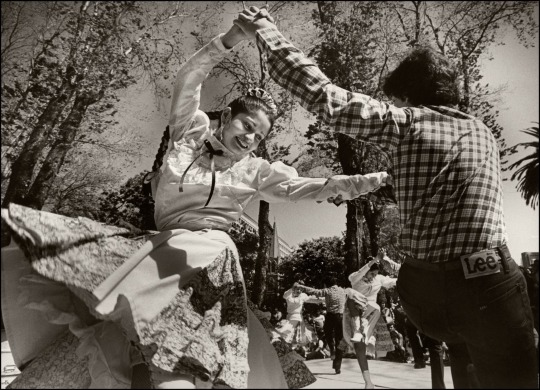
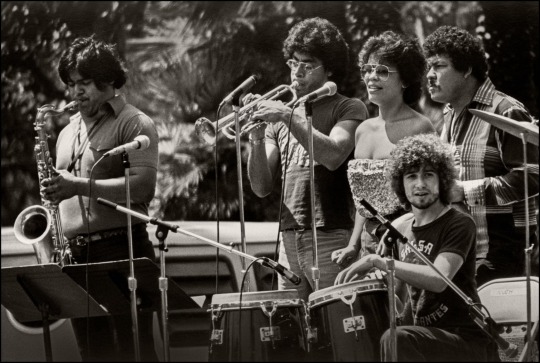
Dancers and musicians perform during a Cinco de Mayo celebration in San Jose, California, on May 5, 1980. By that time, the holiday had grown popular in the U.S.—and it was on the verge of yet another transformation in the form of commercialization. Photographs By Bromberger Hoover Photography, Getty Images
The holiday's popularity really grew in the 1960s, when Mexican-American, or Chicano, activists embraced the holiday as a way to build pride among Mexican Americans, Alamillo says.
The 1862 Cinco de Mayo victory carries a strong anti-imperialist message that resonates with many Mexican Americans, experts say.
"As a community, we are tough and committed, and we believe that we can prevail," said Robert Con Davis-Undiano, a professor of Chicano studies at the University of Oklahoma in Norman. "That was the attitude of the ragtag Mexican troops who faced and defeated the French in Puebla.”
At the same time, Cinco de Mayo was transformed from a strictly nationalist celebration to a bicultural event that expressed Mexican Americans identity, Alamillo said.
"It allowed for Anglo-Americans to partake in and learn about Mexican culture through Cinco de Mayo," Alamillo said. "Mexican Americans by this point were interested in building this relationship, because they were asking for certain political demands and for more resources for the community.
"It became a really interesting negotiation festival in a lot of ways."
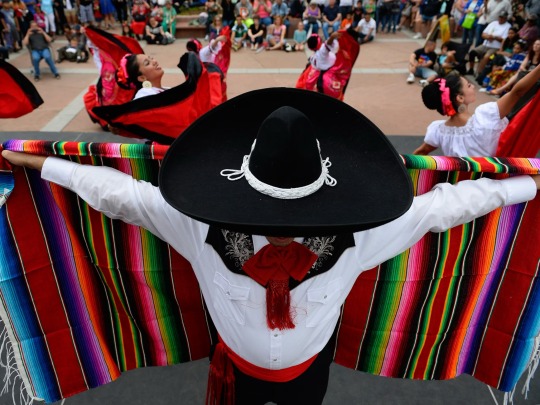
A dance troupe performs traditional Mexican dances for Cinco de Mayo celebrations in Denver, Colorado on May 3, 2015. Although some people see the holiday as an excuse to eat tacos and drink beer, many still honor it through cultural events like this one. Photograph By Helen H. Richardson, The Denver Post/Getty Images
How Cinco de Mayo is Celebrated Today
Then came the 1980s, and the commercialization of Cinco de Mayo.
This, Alamillo said, is when the meaning of Cinco de Mayo changed from community self-determination to a drinking holiday for many people.
He says U.S. corporations, particularly those selling alcohol, were eager to tap into the expanding Hispanic population in the U.S.
"It's not just the large number of the Hispanics but also that it's a very young population that is particularly receptive to advertisers," Alamillo said. “Cinco de Mayo became a vehicle to tap into that market.”
Today, most Americans celebrate Cinco de Mayo by indulging in a glut of tacos, tequila, and beer. In fact, in recent years Cinco de Mayo beer sales have outpaced both St. Patrick’s Day and the Super Bowl.
But many communities still do honor the holiday with festivals, parades, and other events honoring the richness of Mexican-American culture and heritage.
0 notes